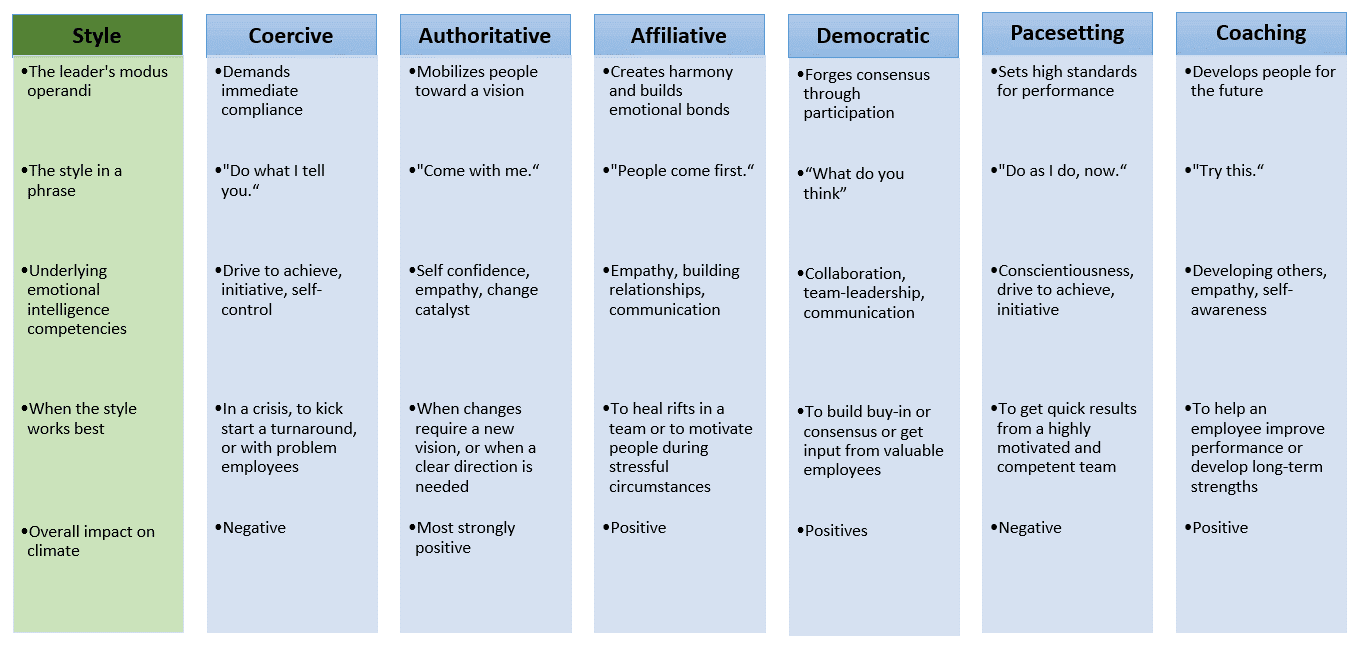Fashion is temporary, but style is forever.
That’s because “style” is not subjected to rapidly-changing standards created by those in power. Style is personal, it’s an expression of self.
I’m not only talking about your style of dress, but also the style in which you talk, in which you treat others, the style in which you choose to live this life.
Style is not limited to one industry, either. Project management (PM) professionals, when directing a project team, are responsible for selecting a project management style that suits themselves, their business, and their team.
Five Project Management Styles
- Agile
- Hands-off
- Affiliative
- Deadline-driven
- Coercive
So how do you choose which style is right, especially when style is subjective to begin with?
While I can’t answer the question for you, I can help give you the tools to figure it out. Let’s talk about the different styles in which other project managers lead their team why that works for them.
Defining Project Management Style
Before we get started, let me detail what I mean by a project management style, especially because other terms such as “project management approach,” and “project management methodology” are also floating out there in the ether.
Project management approach and project management methodology both refer to the official strategies managers use to carry a project from ideation, to closure. Examples of these are SCRUM, agile, waterfall, etc.
A project management style is the individual mindset a project manager has when managing their team. Are you incredibly strict and deadline-oriented? Are you more relaxed and trusting of your team?
Establishing your style and communicating it clearly is important in many ways. For one, it sets expectations for employees who can then accept or reject a job based on their understanding of how you work. It also lets people know well in advance what you value most in your team.
Enough introductions — let’s talk style!
Agile
Yes, agile is a methodology, but it can also be considered a style. That’s because in and of itself, agile simply means “able to move quickly and easily.” In other words, project managers who choose an agile style simply expect their team members to be flexible and adaptive.
“It keeps us both organized and nimble.”
—Ben Sailer of CoSchedule
Hands-off
Some project managers want their teams to feel they have complete independence to carry out a project life cycle. This doesn’t mean they have a disengaged PM who remains in the background, but rather they have a trusting manager who sets expectations and knows their team is more than capable of exceeding them.
These types of managers, also referred to as “democratic” managers, are adept at empowering their employees. Micro-managing has proven to stifle productivity and create tension within the workplace. A democratic style challenges the notion that employees must be carefully watched in order to succeed, and inserts trust where others managers insert doubt.
“My preferred management style is a hands-off, laissez-faire method. When I was first starting off managing projects, I would be much more hands on and require constant updates from all the different teams. I was under the impression that there was no such thing as excessive communication, but I later found that our productivity took a nosedive due to wasted time responding to group chats and emails.
“Furthermore, the constant need to provide new updates on long-term projects increased stress and led to cut corners. Eventually, I learned to trust in the teams I had established and let them off the leash, only requiring status updates every few weeks to a month. This resulted in a much smoother progression and a higher overall success rate. To be fair, this method is only viable if you’ve spent a lot of time with an experienced team; otherwise, you’re probably better off staying on top of newbies.”
—Bryce Welker from Crush the CPA Exam
Affiliative
To be affiliated with something is to be loosely connected to it. Affiliative project managers are in charge of their teams but aren’t over-bearing. Similar to hands-off managers, they act as background support and are there to check in on progress and barriers from time to time.
Affiliative management is good for experienced employees whose projects don’t have a strict deadline. You would not apply this approach to say, a construction project, because those projects need to work within a set timeframe.
You could, however, apply this approach to your experienced design team as they work on some internal initiatives that are not pressing.
Deadline-driven
A deadline-driven style focuses heavily on the project’s timeline. This type of manager puts deadlines first, and may even sacrifice other aspects such as quality or budget as a result.
This style of project management is good when the stakes are low and the projects have a smaller scope. You might choose to use this style when managing the planning of the office Valentine’s Day party, as the holiday has a specific deadline and final results will have little to no effect on your company’s bottom line.
This is not a good management style for detailed projects with a large scope, as you want to make sure all aspects of those projects are paid adequate attention.
Coercive
A coercive project manager is there to get stuff done. They aren’t looking for collaboration or anything else that might eat up their time. Their goal is to manage their team according to their own objectives.
Coercive project management is not always great for morale, and should be used as necessary. One example of an appropriate time for coercive management is when a failing restaurant calls in a professional to help them redesign their menu, décor, and management practices. Because that company is seeking help in a dire situation, it could be useful to have someone rough and tumble come in and bark orders.
Coercive management may also be necessary when dealing with a team of inexperienced employees. Instead of asking your team to collaborate, you can use this style to help employees learn and grow so they become more experienced professionals who can then be more independent on their next project.
Never Going Out of Style
One thing that never goes out of style? Good managers who care about their employees’ overall happiness and professional development. No matter which style you choose, be sure to treat your team members with the respect they deserve.
An empowered team is a happy team, and they’ll do wonders for a mission they believe in.
Originally published on G2’s blog. Used with permission.








